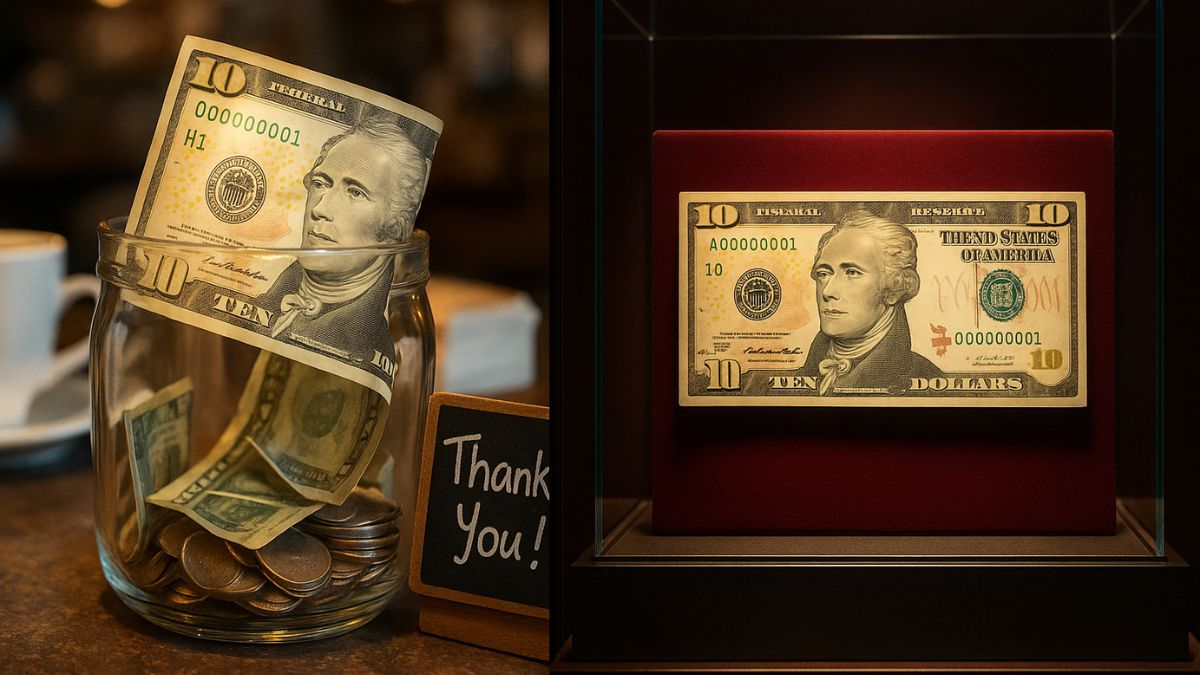In an extraordinary twist of fate, a rare $10 bill discovered in a tip jar has ascended from obscurity to become a prized exhibit in a renowned museum.
This remarkable journey underscores the hidden value that everyday currency can hold, especially when unique features like rare serial numbers or printing anomalies are involved.
The Discovery: An Unexpected Windfall
The story begins with a barista in Philadelphia who, while sorting through the day’s tips, stumbled upon an unusual $10 bill. At first glance, it appeared ordinary, but a closer inspection revealed a rare serial number: 01234567, known as an ascending ladder.
Such sequential serial numbers are exceedingly rare and highly sought after by collectors. Recognizing its potential value, the barista consulted a currency expert, setting the stage for the bill’s remarkable transformation from a simple tip to a museum artifact.
Understanding the Rarity: What Makes It Special?
Several factors contribute to the exceptional value of this $10 bill:
- Ascending Ladder Serial Number: Serial numbers that follow a sequential pattern, like 01234567, are rare and highly coveted.
- Condition: The bill was in uncirculated condition, free from folds, creases, or wear, significantly enhancing its value.
- Printing Anomalies: While not applicable in this case, bills with misprints or errors can also be highly valuable.
These unique characteristics can elevate a bill’s worth from its face value to thousands of dollars in the collectors’ market.
From Collector’s Item to Museum Exhibit
After authentication and appraisal, the bill caught the attention of the American Numismatic Museum, which acquired it for its collection.
Now displayed prominently, it serves as a tangible reminder of the hidden treasures that can exist in everyday life.
Comparative Table: Notable Rare $10 Bills
| Feature | Description | Estimated Value |
|---|---|---|
| Ascending Ladder Serial Number | Sequential numbers like 01234567 | $7,500 – $15,000 |
| Star Notes | Bills with a star symbol | $500 – $2,000 |
| Misprints/Errors | Printing anomalies or mistakes | $1,000 – $10,000+ |
| Historical Series (e.g., 1950s) | Older bills with unique features | $30 – $500 |
This extraordinary tale of a rare $10 bill transitioning from a tip jar to a museum exhibit highlights the hidden value that can lie in everyday objects.
It serves as a compelling reminder to remain observant, as treasures can be found in the most unexpected places.
FAQs
How can I identify a rare $10 bill?
Look for unique serial numbers (e.g., ascending or descending sequences), star symbols, misprints, or bills from older series.
What should I do if I find a potentially valuable bill?
Consult a professional currency appraiser or numismatist to authenticate and appraise the bill.
Where can I sell a rare $10 bill?
Rare bills can be sold through auction houses, online marketplaces, or directly to collectors.

